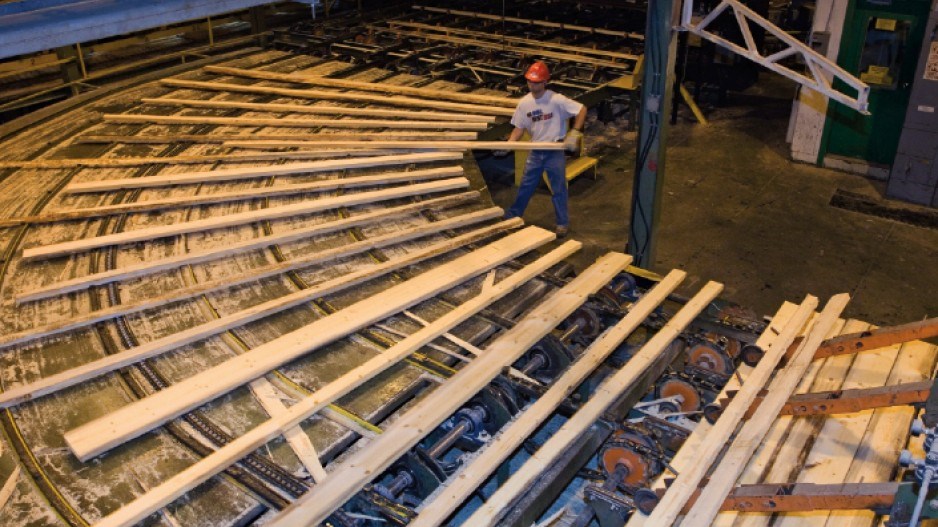BC’s Interior forestry industry is counting on cutting-edge sawmill technologies to soften the blow of the heavily reduced annual allowable cut anticipated in the wake of the mountain pine beetle infestation.
“The worst-case scenario is that the [annual allowable cut] might drop as much as 30% to 40%,” said Doug Routledge, acting president of the Council of Forest Industries (COFI).
Routledge said the sector hopes to reduce that number to 5% or 10% by harvesting trees in the right order – using affected pine trees first, for example – and reforestation.
But he said that improvement would be impossible if companies hadn’t also invested heavily in technology that allows them to process wood that would have previously been viewed as worthless.
“There really isn’t an aspect of our business in B.C. that we haven’t focused on and either applied a strategy or a technology to utilize the mountain pine-beetle logs,” said Ray Ferris, vice-president of wood products at West Fraser Timber (TSE:WFT).
Ferris said his company has spent between $3 million and $10 million to update the technology at each B.C. sawmill it operates.
Stephen Mackie, director of business optimization for Canfor (TSE:CFP), said his company has likewise invested in mills throughout the province, in both beetle and non-beetle areas.
High-tech scanning technologies can now detect cracks in wood, and saw blades can do a better job of following the grain of a twisted log. Since dead wood tends to have more cracks and to twist more, it means mills can extract more value out of beetle-killed wood.
Humidity sensors help make kiln drying more exact, a part of the sawmill process in which pieces of wood are straightened by heat.
West Fraser Timber has also invested in equipment to handle timber more gently.
“The logs and lumber easily break apart in the mill and create more broken pieces and more dust and debris,” said Ferris, adding that mills have also had to invest in dust-mitigation measures.
“Mechanically, every mill has spent millions of dollars in additional handling equipment to better handle shorter, smaller pieces of lumber.”
The technology has helped the company produce both more high-quality lumber, usually destined for the Japanese market, and lower grades, more likely to be sold to China.
“We’re able to adjust our processing to produce a wider range of products,” said Ferris, “to focus more on certain product widths and lengths, and specifically around markets like China.”
While the beetle infestation is winding down, Routledge said the technology and methods that had been developed in response to the crisis would help the industry in the future.
“Some stands that may have been [unsellable] at a certain market level could now be merchantable with a lot of this new technology,” said Routledge, adding that it could make it possible to get usable lumber out of fire-damaged or dead trees.




